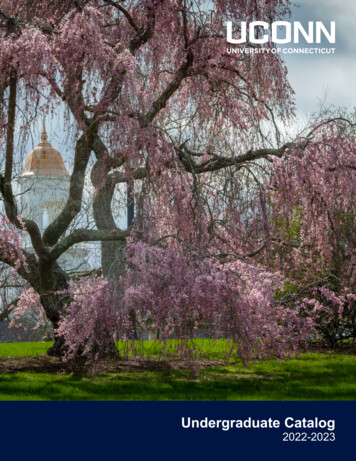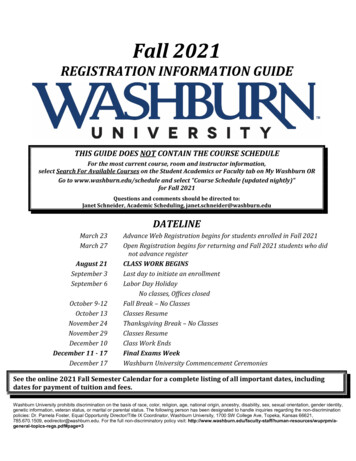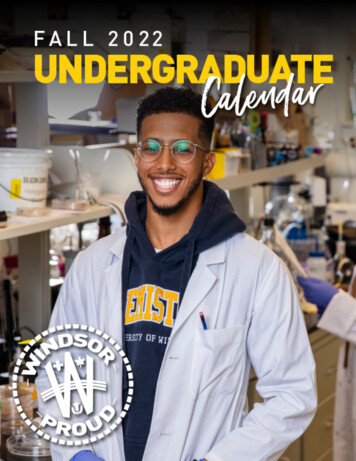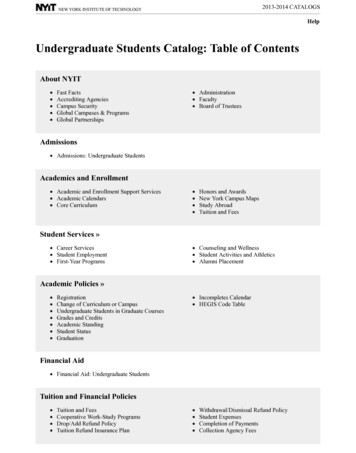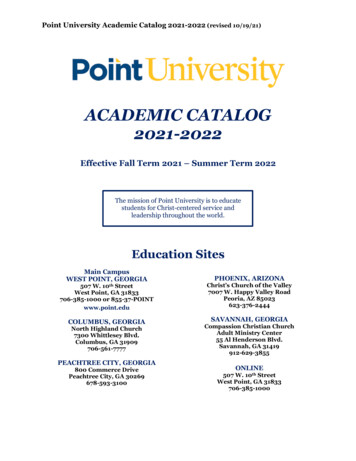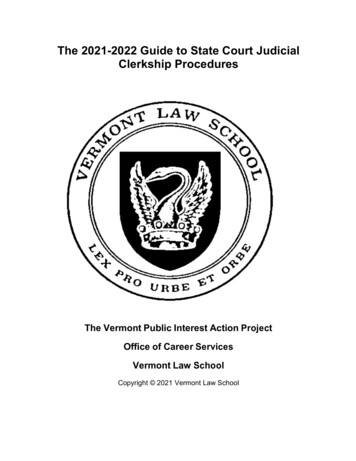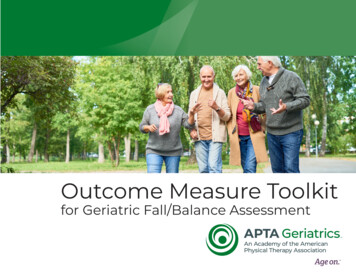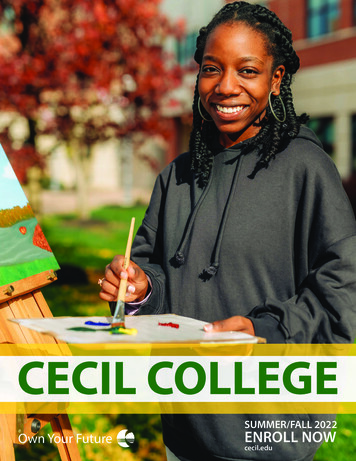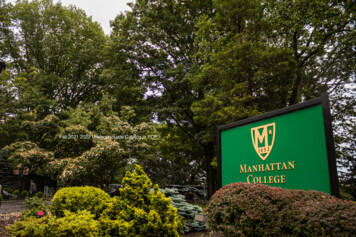
Transcription
Fall 2021 2022 Undergraduate Catalog in PDF
Table of ContentsUndergraduate Studies . 5About Manhattan College . 6Mission & History . 9Recognition & Membership . 11Honors, Medals & Prizes . 12FERPA . 19Non-Discrimination Policy . 22Location . 23College-wide Educational Goals . 26Programs of Study . 27O'Malley School of Business . 30Accounting, Business Analytics, CIS & Law . 38Economics & Finance . 46Global Business Studies . 54Management & Marketing . 57Real Estate Minor . 63School of Liberal Arts . 64Art History and Digital Media Art . 80Catholic Studies . 84Communication . 86Critical Race & Ethnicity Studies . 95Cultural Anthropology .96Digital Arts & Humanities . 97Economics . 99English .100Environmental Studies . 105Ethics .109Film Studies . 110History . 112International Studies . 114Labor Studies . 122
Liberal Learning . 124Medieval Studies . 125Modern Languages & Literatures . 127Music, Theater and Sound Studies . 129Peace and Justice Studies . 132Philosophy . 139Political Science . 141Psychology . 145Religious Studies . 149Sociology . 154Urban Studies . 159Women & Gender Studies . 163School of Education & Health . 165Adolescence . 171Childhood . 186Kinesiology . 195School of Engineering . 209Chemical . 223Civil .228Electrical & Computer . 233Mechanical . 240Engineering Science . 244Dept. of Air and Space Studies . 245School of Science . 245Biochemistry & Chemistry . 252Biology .262Computer Science .270Environmental Science . 286Mathematics . 291Physics . 299Pre-Health Concentration . 304School of Continuing & Professional Studies . 306Allied Health . 308
Organizational Leadership . 312Camino Program . 316Intensive English Language (IELP) and International Pathways (IPP) Programs. 319Radiological and Health Professions . 322Academic Support & Resources . 322Center for Academic Success . 323Center for Career Development . 324Center for Graduate School & Fellowship Advisement . 326O'Malley Library . 329Specialized Resource Center . 330Study Abroad Opportunities . 331Opportunity Programs . 332Academic Policies & Procedures . 332Academic Dismissal . 343Academic Probation . 344Academic Suspension . 345Academic Warning . 346Attendance Policy . 347Academic Progress . 348Change of Program . 349Credits/Off Campus Course Information . 350Grades .352Graduation .355Incompletes . 356Leave of Absence . 357Repeated Courses/Grade Replacement . 359Transcripts .361Withdrawal .362Administration & Staff . 365Admissions . 373Board of Trustees . 384Calendar . 387
SCPS Undergraduate Calendar* . 390Faculty . 393Financial Services . 438Tuition & Fees .439Student Accounts and Bursar Information . 443Financial Aid Administration . 451Student Life . 482Athletics . 484Campus Ministry & Social Action . 485Career Development . 487Counseling Center . 489Computer Facilities . 490Dean of Students . 492Health Services . 495International Student . 495Public Safety . 496Residence Life . 497Office of Student Engagement . 499Veterans Benefits . 506Honorary Degrees Conferred . 509Index .509
2021 2022 Undergraduate CatalogUndergraduate StudiesClick here (http://catalog.manhattan.edu/undergraduate/2020 2021 Undergraduate Catalog.pdf) for a PDF of the fullUndergraduate catalog.Welcome to our online catalog, the College’s primary, comprehensive single source ofdepartmental and college-wide information related to academic programs. Courses,degree programs, and policies that govern progress toward completion of a degree aredescribed in this catalog. Students are responsible for knowing and understanding thecontents of the catalog year they are following. The catalog provides a broad range ofcourse information in a consistent online format and is searchable and user-friendly.While every effort is made to ensure that the course information, applicablepolicies and other materials presented in the Catalog are accurate and correct,the College reserves the right to make changes as circumstances require.5
6About Manhattan CollegeAbout Manhattan CollegeThe Mission of Manhattan CollegeManhattan College is an independent Catholic institution of higher learning that embracesqualified men and women of all faiths, cultures, and traditions. The mission of ManhattanCollege is to provide a contemporary, person-centered educational experience thatprepares graduates for lives of personal development, professional success, civicengagement, and service to their fellow human beings. The College pursues thismission through programs that integrate a broad liberal education with a concentration inspecific disciplines in the arts and sciences or with professional preparation in business,education, and engineering.Established in 1853 by the Institute of the Brothers of the Christian Schools, the Collegecontinues to draw its inspiration from the heritage of John Baptist de La Salle, theinnovator of modern pedagogy and patron saint of teachers. Among the hallmarks of thisLasallian heritage are excellence in teaching, respect for human dignity, reflection onfaith and its relation to reason, an emphasis on ethical conduct, and commitment to socialjustice.Historical NoteIn May 1853, five Christian Brothers moved their small Canal Street school to what wasthen known as Manhattanville, a section of New York City at 131st Street and Broadway.The Brothers brought with them more than their furniture and their students. They werethe bearers of an educational tradition that began in 17th century France with Saint JohnBaptist de La Salle, the founder of their order and today acknowledged by the CatholicChurch as the Patron Saint of Teachers. De La Salle formed a community of religiousBrothers who would devote themselves exclusively to their work as teachers. Theirstudents would be the children of the artisans and the underprivileged; their mission wouldbe the intellectual, spiritual, moral, economic and social flourishing of those students.Responding to the needs of his time, De La Salle created a new type of school systemand elevated the work of teaching school — treating it as a profession and a vocation.The Brothers were urged to go beyond rote memory to “touch the hearts” of the students.Practical subjects were taught that would lead to a useful role in society; religion wastaught to impart a commitment to Christian ethics.Between 1853 and 1863, the school grew significantly, adding college-level courses in1859 and first using the name Manhattan College in 1861. It was chartered by the Boardof Regents of the State of New York on April 2, 1863. Manhattan College was an unusualinstitution compared to its peer institutions at the time. From the beginning, the collegesought to combine broad learning in the traditional liberal arts with rigorous technical andpre-professional training. As the first college catalog put it, the curriculum of ManhattanCollege combined the “advantages of a first-class College and Polytechnic Institute,”offering courses in both “the liberal and useful arts and sciences.”As the school grew, new quarters were needed. The cornerstone of the “New Manhattan”was laid in 1922 on property bordered by the Hudson River and Van Cortlandt Park, in theRiverdale neighborhood of the Bronx, its present location. The addition of new buildingsand student residences has enlarged and enhanced the campus significantly. From this
2021 2022 Undergraduate Catalog7accessible site, the college is able to offer access to the cultural, educational, businessand entertainment opportunities of New York City, as well as a self-contained residentialcampus environment.Today Manhattan College identifies itself as a Catholic college in the Lasallian tradition.That tradition has continued to characterize the special educational experience offeredby the College over its long history. Its constant focus has been the education of thedisadvantaged. From its beginning, the College has paid particular attention to educatingfirst-generation college students, and was an early proponent of access to disadvantagedand minority students, establishing special scholarship funds as early as 1938. Thatcommitment continues today and is evident in Manhattan’s diverse student body, many ofwhom are the first in their families to attend college, and most of whom are supported bysignificant financial aid.The College continues to realize the objectives stated in its first catalog by maintaininga full range of programs in the liberal arts (http://www.manhattan.edu/academics/arts/) and sciences (http://www.manhattan.edu/academics/science/), combinedwith professional programs in engineering (http://www.manhattan.edu/academics/engineering/), business (http://www.manhattan.edu/academics/business/), and tion/). The quality of the undergraduateprograms is demonstrated in many ways, for example, in the presence on campus ofchapters of prestigious honor societies eties/) such as Phi Beta Kappa, Sigma Xi, and Tau Beta Pi.Over the years, Manhattan College has seen many changes, and yet it maintains its deepcommitment to its heritage and ideals. What were a predominantly Christian Brothersfaculty has become predominantly lay and includes a significant percentage of women.The College became coeducational and accepted its first women undergraduate studentsin 1973. Currently, women comprise almost half of the full-time undergraduate studentbody.With the opening of Horan Hall (1990) and its twin, East Hill (renamed Lee Hall) (2008),the College completed a major transformation from a majority-commuter to a majorityresidential college. Manhattan College now offers a four-year guarantee of residenthousing (http://www.manhattan.edu/student life/residence-halls/) and 80 percent of thestudent body chooses to live on or near campus. Currently, the College has a studentbody of approximately 3,500 — 2,900 undergraduates and 600 graduate and continuingeducation students. The student-faculty ratio is 12:1.The College continues to follow the founding spirit of John Baptist de La Salle by beingresponsive to the needs of its place and time. Innovation grounded in tradition has alwaysbeen a hallmark of Lasallian education, and Manhattan College’s new strategic /), “Renewing the Promise,” commits theCollege to a course of continuous improvement of its programs and facilities in responseto emerging needs.Recognition and MembershipManhattan College is chartered and empowered to confer academic degrees by the NewYork State Education Department.
8About Manhattan CollegeIt is accredited by the Middle States Commission on Higher Education, 3624 MarketStreet, Philadelphia, PA 19104-2680, 215-662-5606, http://www.msche.org/. The collegeis approved by the American Chemical Society for the professional training of chemistsand by the New York State Department of Health for Radiation Therapy Technology.The School of Business is accredited by AACSB International, The Association toAdvance Collegiate Schools of Business, the premier accrediting agency for businessprograms globally.The undergraduate programs in Chemical Engineering, Civil Engineering, Electrical, andComputer Engineering, and Mechanical Engineering, and the masters of engineeringprogram in Environmental Engineering are accredited by the Engineering AccreditationCommission of ABET Inc. (www.abet.org (http://www.abet.org/)).The teacher education programs at Manhattan College are accredited by the TeacherEducation Accreditation Council (TEAC). Formally recognized by the Council for HigherEducation Accreditation and by the U.S. Department of Education, TEAC is a nonprofitgroup dedicated to improving academic degree programs for professional educators. Itsprimary work is accrediting undergraduate and graduate professional education programsin order to assure the public about the quality of college and university programs. TEACbecame part of CAEP (Council for the Accreditation of Educator Preparation) in 2013.CAEP awaits recognition by the Council for Higher Education Accreditation and by theU.S. Department of Education.The College is a member of the Association of American Colleges, the American Councilon Education, the Institute of International Education, the National Catholic EducationalAssociation, the Association of Urban Universities, the Association of Governing Boards ofUniversities and Colleges, the American Association of University Women, the AmericanSociety for Engineering Education, Middle Atlantic Association of Colleges of BusinessAdministration, Association of Continuing Higher Education, the National Associationof College and University Summer Sessions, American Association of Colleges forTeacher Education, the College Entrance Examination Board, the National Commissionfor Cooperative Education, Association of Catholic Colleges and Universities (ACCU),Commission on Independent Colleges and Universities (CICU), National Associationof Independent Colleges & Universities (NAICU), NY Campus Compact, Lilly FellowsProgram, Lower Hudson Valley Consortium of Catholic Colleges & Universities (LHVCC),FSC DENA, International Association of Lasallian Universities (IALU), Annapolis Group.The College is an associate member of The Hispanic Association of Colleges andUniversities (HACU).
2021 2022 Undergraduate Catalog9Mission and HistoryThe Mission of Manhattan CollegeManhattan College is an independent Catholic institution of higher learning that embracesqualified men and women of all faiths, cultures, and traditions. The mission of ManhattanCollege is to provide a contemporary, person-centered educational experience thatprepares graduates for lives of personal development, professional success, civicengagement, and service to their fellow human beings. The College pursues this missionthrough programs that integrate a broad liberal education with concentration in specificdisciplines in the arts and sciences or with professional preparation in business, educationand engineering.Established in 1853 by the Institute of the Brothers of the Christian Schools, the Collegecontinues to draw its inspiration from the heritage of John Baptist de La Salle, theinnovator of modern pedagogy and patron saint of teachers. Among the hallmarks of thisLasallian heritage are excellence in teaching, respect for human dignity, reflection onfaith and its relation to reason, an emphasis on ethical conduct, and commitment to socialjustice.Historical NoteIn May 1853, five Christian Brothers moved their small Canal Street school to what wasthen known as Manhattanville, a section of New York City at 131st Street and Broadway.The Brothers brought with them more than their furniture and their students. They werethe bearers of an educational tradition that began in 17th century France with Saint JohnBaptist de La Salle, the founder of their order and today acknowledged by the CatholicChurch as the Patron Saint of Teachers. De La Salle formed a community of religiousBrothers who would devote themselves exclusively to their work as teachers. Theirstudents would be the children of the artisans and the underprivileged; their mission wouldbe the intellectual, spiritual, moral, economic and social flourishing of those students.Responding to the needs of his time, De La Salle created a new type of school systemand elevated the work of teaching school — treating it as a profession and a vocation.The Brothers were urged to go beyond rote memory to “touch the hearts” of the students.Practical subjects were taught that would lead to a useful role in society; religion wastaught to impart a commitment to Christian ethics.Between 1853 and 1863, the school grew significantly, adding college-level courses in1859 and first using the name Manhattan College in 1861. It was chartered by the Boardof Regents of the State of New York on April 2, 1863. Manhattan College was an unusualinstitution compared to its peer institutions at the time. From the beginning, the collegesought to combine broad learning in the traditional liberal arts with rigorous technical andpre-professional training. As the first college catalog put it, the curriculum of ManhattanCollege combined the “advantages of a first-class College and Polytechnic Institute,”offering courses in both “the liberal and useful arts and sciences.”As the school grew, new quarters were needed. The cornerstone of the “New Manhattan”was laid in 1922 on property bordered by the Hudson River and Van Cortlandt Park, in theRiverdale neighborhood of the Bronx, its present location. The addition of new buildingsand student residences has enlarged and enhanced the campus significantly. From this
10Mission and Historyaccessible site, the college is able to offer access to the cultural, educational, businessand entertainment opportunities of New York City, as well as a self-contained residentialcampus environment.Today Manhattan College identifies itself as a Catholic college in the Lasallian tradition.That tradition has continued to characterize the special educational experience offeredby the College over its long history. Its constant focus has been the education of thedisadvantaged. From its beginning, the College has paid particular attention to educatingfirst-generation college students, and was an early proponent of access to disadvantagedand minority students, establishing special scholarship funds as early as 1938. Thatcommitment continues today and is evident in Manhattan’s diverse student body, many ofwhom are the first in their families to attend college, and most of whom are supported bysignificant financial aid.The College continues to realize the objectives stated in its first catalog by maintaininga full range of programs in the liberal arts (http://www.manhattan.edu/academics/arts/) and sciences (http://www.manhattan.edu/academics/science/), combinedwith professional programs in engineering (http://www.manhattan.edu/academics/engineering/), business (http://www.manhattan.edu/academics/business/) and tion/). The quality of the undergraduateprograms is demonstrated in many ways, for example, in the presence on campus ofchapters of prestigious honor societies eties/) such as Phi Beta Kappa, Sigma Xi and Tau Beta Pi.Over the years, Manhattan College has seen many changes, and yet it maintains its deepcommitment to its heritage and ideals. What was a predominantly Christian Brothersfaculty has become predominantly lay, and includes a significant percentage of women.The College became coeducational and accepted its first women undergraduate studentsin 1973. Currently, women comprise almost half of the full-time undergraduate studentbody.With the opening of Horan Hall (1990) and its twin, East Hill (2008), the Collegecompleted a major transformation from a majority-commuter to a majority-residentialcollege. Manhattan College now offers a four-year guarantee of resident housing(http://www.manhattan.edu/student life/residence-halls/) and 80 percent of the studentbody chooses to live on or near campus. Currently, the College has a student body ofapproximately 3,500 — 2,900 undergraduates and 600 graduate and continuing educationstudents. The student-faculty ratio is 12:1.The College continues to follow the founding spirit of John Baptist de La Salle by beingresponsive to the needs of its place and time. Innovation grounded in tradition has alwaysbeen a hallmark of Lasallian
Organizational Leadership . 312 Camino Program . 316 Intensive English Language (IELP) and International Pathways (IPP) Programs . Manhattan College is chartered and empowered to confer academic degrees by the New York State Education Department. 8 About Manhattan College

